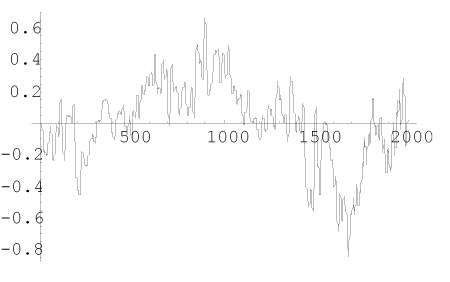Over the last several years, there has been quite a bit of debate in climate
circles over historical temperature reconstructions from various "proxies" like
ice cores and tree ring widths. The debate really heated up a few years back
when Michael Mann introduced, and the climate catastrophists at the UN IPCC
adopted, the hockey stick chart. Until that time, both scientists and
historians agreed that there was good evidence for a period in the Middle Ages
with temperatures as warm or warmer than today (thus the name "Greenland" and
not "Glacierland") and a period known as the Little Ice Age in the 17th to 19th
centuries that was quite frosty. Mann attempted to refute this view, using data
mainly from bristlecone pine tree rings, that the temperature history over the
last 1000 years was in fact quite stable, at least until man started producing
CO2. (I was not writing on climate at the time, but I always wondered if any
editor availed himself of the "Mann blames Man" headline.)
But why do these temperature reconstructions matter? Aren’t we more
concerned with the temperature in 2050 than in 1050? Yes and no. To really do
any kind of job at predicting future temperatures, we need more than egghead
computer models tweaked in some scientist’s office. What we really need are
good empirical studies about the sensitivity of temperature to different
variables.
We can see the importance of historical proxies in the recent study by
Scafetta and West (pdf) which looked at historical correlations between solar
activity and temperatures. The authors performed their analysis multiple times,
both using "flat" historical reconstructions like Mann’s and other
reconstructions (e.g. Moberg)
which show more historical variability. The authors concluded (emphasis
added):
Climate is relatively insensitive to solar changes if a
temperature reconstruction showing little preindustrial variability is adopted.
In this scenario most of the global warming since 1900 has to be interpreted as
anthropogenically induced. On the other hand, if a secular temperature
showing large preindustrial variability is adopted, such as MOBERG05, the
climate is found to be very sensitive to solar changes and a significant
fraction of the global warming that occurred during last century should be solar
induced. If ACRIM satellite composite is adopted the Sun might have
further contributed to the recent global warming.
Some thoughts:
-
So, which results should we rely on? The ones using Mann’s data
or the ones using Moberg’s? Well, even the catastrophists at the IPCC have
abandoned Mann in favor of Moberg, so one should assume the conclusions in bold
are very much in play. - Either way, don’t panic! Even if all the 0.6C warming in the last century was due to CO2, simple math says that we should not expect more than about 1 degree more warming over the next century (calculation here). If the sun caused half of that 0.6C, then you can cut future warming forecasts in half.
- Mann’s work is full of errors, both statistical and otherwise. Beginning with McIntyre and McKittrick, and proceeding to many major scientists, his work has been discredited, though he does keep trying to save the thin branch (probably from a bristlecone pine!) he has crawled out on, but he refuses to fix even basic scribal errors pointed out in his first study. I discuss more of the problems with Mann and other similar proxy studies, including the divergence problem, here.
- Both CO2 Science and Climate Audit have more on historical proxy studies and their problems than you can ever digest.
- Though it doesn’t make the front pages, there are still good common sense peer-reviewed studies that show the Medieval Warm Period and Little Ice Age that we could expect from narrative historical records. One such is Loehle, Via Climate Audit (temperature anomaly over last 2000 years or so, via proxies):
- Steven Milloy, via Tom Nelson, has much more on the sun as the primary driver of climate.
- You can view the section of my global warming film on historical proxies below. The proxy part starts around 3:00 minutes in (or -5:30 from the end if it is shown that way)


Funny thing today on Samizdata someone posted a link to an article in the Financial Post about Rhodes Fairbridge’s work on the variation in solar output associated with changes in the solar system’s center of gravity. His work predicts that we are entering a period of reduced solar output and are due for a period of global cooling in a few years. I like these sort of predictions because we’ll get to find out if they are right.
I’m an amateur astronomer and have noted the lack of sunspot activity recently, a phenomenon associated with reduced solar heat output.
I enjoy reading this blog.
Loehle’s article is not a good study. He does not do a good literature review. Does not properly compare his work to that of Moberg (closest comparison). Messes up on at least one of the selected proxies. Does not disclose his reasons for inclusion and screening out proxies. It’s really, really not a quality piece of work. I don’t think he puiblished in EE because of controversial stance. I think he published there…because they tolerate slack work.